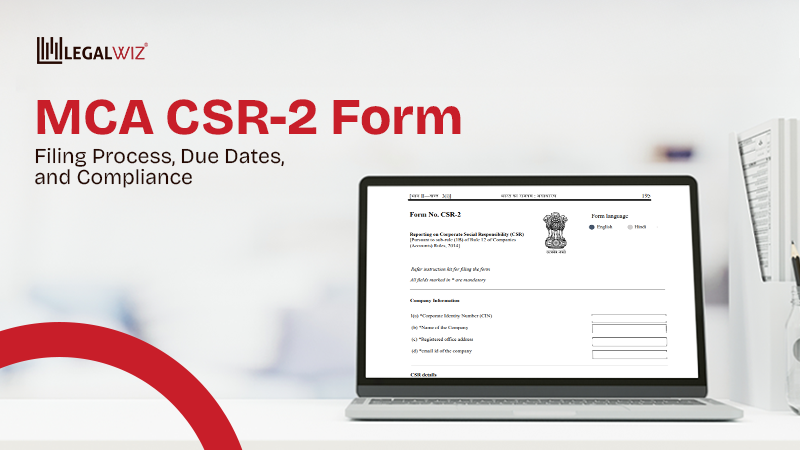ITR-1 Sahaj Form: Eligibility, Documents & Filing Rules
Every person or entity earning income from India is required to furnish a statement of its income, taxes and deductions each year. This process is known as Income Tax Return Filing. Now, when you consider the different ways everyone can earn incomes, it gets very difficult to manage all return filings through one set process. As a result, the Income Tax Department provides for different forms applicable to different entities and circumstances. LegalWiz.in can help you in income tax return filing via the appropriate form. Through this article, we cover all the basics of what is ITR 1 sahaj form, its applicability and its requirements.
What is ITR 1?
As stated above, the income tax department eases the process by ITR 1 for people with an income up to Rs. 50 lakhs per year. This includes salaried individuals, income from houses, freelancers, etc. ITR 1 is also known as the Sahaj Form. The term ‘sahaj’ is a hindi term that means ‘easy’ So, you can say that the form Sahaj is one of the easiest forms applicable for income tax return filing in India. The due date for filing ITR 1 for the FY 2022-2023 is 31st July, 2023.
What is the applicability of ITR 1 Sahaj form?
The ITR-1 form is applicable to all Individuals, HUFs or firms other than LLPs with an annual income of less than Rs. 50 lakhs. The Sahaj form is most commonly applicable to salaried persons. You can read more about online ITR filing for salaried employees.
Who is eligible to file ITR 1?
Usually salaried individuals are the ones who file ITR-1 online. People with the following types of income not exceeding Rs. 50 lakhs are eligible to file ITR Sahaj form:
- Income received/ receivable through salary;
- Pension income;
- Gratuity;
- Income of One Housing property (must not exceed one); and
- Lastly, income from other sources (includes freelance income, consultant’s incomes etc.)
Who cannot file ITR 1 SAHAJ form?
Certain types of income are excluded from the ITR 1 form, even if it is within the limit of Rs. 50 lakhs. These incomes include:
- Income from more than one housing property;
- Income received from winning a lottery, legal gambling or horse-racing etc;
- Long term or short term capital gains on which tax exemption is not applicable;
- Indian resident having assets and accounts outside of India;
- Income from conducting a business or profession;
- Agricultural income amounting to more than Rs. 5000; and
- Lastly, exemption due to double taxation provision.
Key Note: The individuals and HUFs that are not eligible to file ITR 1, need to furnish ITR 2. Read “All you need to know about ITR 2“.
What is ITR 1 format?
The SAHAJ form ITR 1 comprises seven (7) different parts. These include:
- Personal Information;
- Information on Income received (Gross Income Total);
- Details of Deductions and Taxable incomes;
- Computation of the Tax;
- Information of Advance and self-assessed tax payments;
- Details of Tax Deducted at source from employers; and
- Details of Tax Deducted at source from income other than employment.
KeyNote: All the information you provide must be in accordance with your Form 16. For more information, do read: “What is Form 16?“
What are the documents required to file ITR 1 SAHAJ form?
The following documents will come in handy when a person files Sahaj form online:
- Annual Information Statement (AIS);
- Copy of Form 16 received by all employers in a Financial year;
- Receipt of House Rent (only if applicable); and
- Receipts of Investment Premium payment.
Even when you keep these documents in handy, do note that you are not required to submit them to the Income Tax Department. These documents are only for your perusal, to submit the relevant and accurate information. Further, there are chances that an assessing officer might ask you to furnish the necessary documents.
How to file Sahaj Form?
There are two modes of filing ITR 1 Sahaj form on the tax e- filing portal. Let’s see the overview of both these modes:
Mode 1: Filing via downloadable utility
Here, you can download the ITR Sahaj form utility, which helps you in tax computation. It comes in a XSL format, and you can complete the process of tax computation offline. You can download the utility by :
- Clicking here;
- Click on Utility Excel Based; and
- Download.
Once you complete the tax computation process, you can file ITR by uploading it to the portal in .json format.
Mode 2: Online Filing
Here, the entire tax and liability computation is done electronically online, in the form itself. You won’t need to upload any other form apart from submitting the relevant details.
Pro Tip: Before you move ahead with filing ITR 1, ensure to have your aadhar card linked to your PAN, this makes the process quite easy and will also give you access to certain other services on the income tax portal.
Conclusion
ITR 1 Sahaj form is one of the simplest Income Tax related forms. Hence, it is applicable to salaried individuals with an income less than Rs. 50 lakhs. Majority of the employed youth falls under this category. The youth today are pretty self sufficient, and also eager to take up on their serious responsibilities. LegalWiz.in experts are here to make the entire process even easier for you! If you need any assistance in preparing and submitting ITR 1 SAHAJ form, we are just one call away!
Frequently Asked Questions
If I earn income from rent of one house property, can I file ITR 1 Sahaj Form?
Yes, for all individuals earning less than Rs. 50 lakhs as income from one house property, ITR-1 form is applicable. However, do note that only one house property income is applicable. If you are earning from more than one property owned by you, you cannot file ITR 1.
Can I file my ITR 1 myself?
Yes, you can easily file your own income tax return through the Sahaj form. You just need to ensure that you carefully follow the guidelines. You can even consult an expert before making the final submission.

Diksha Shastri
As a writer, Diksha aims to make complex legal subjects easier to comprehend for all. As a Lawyer, she assists startups with their legal and IPR drafting requirements. To understand and further spread awareness about the startup ecosystem is her motto.







